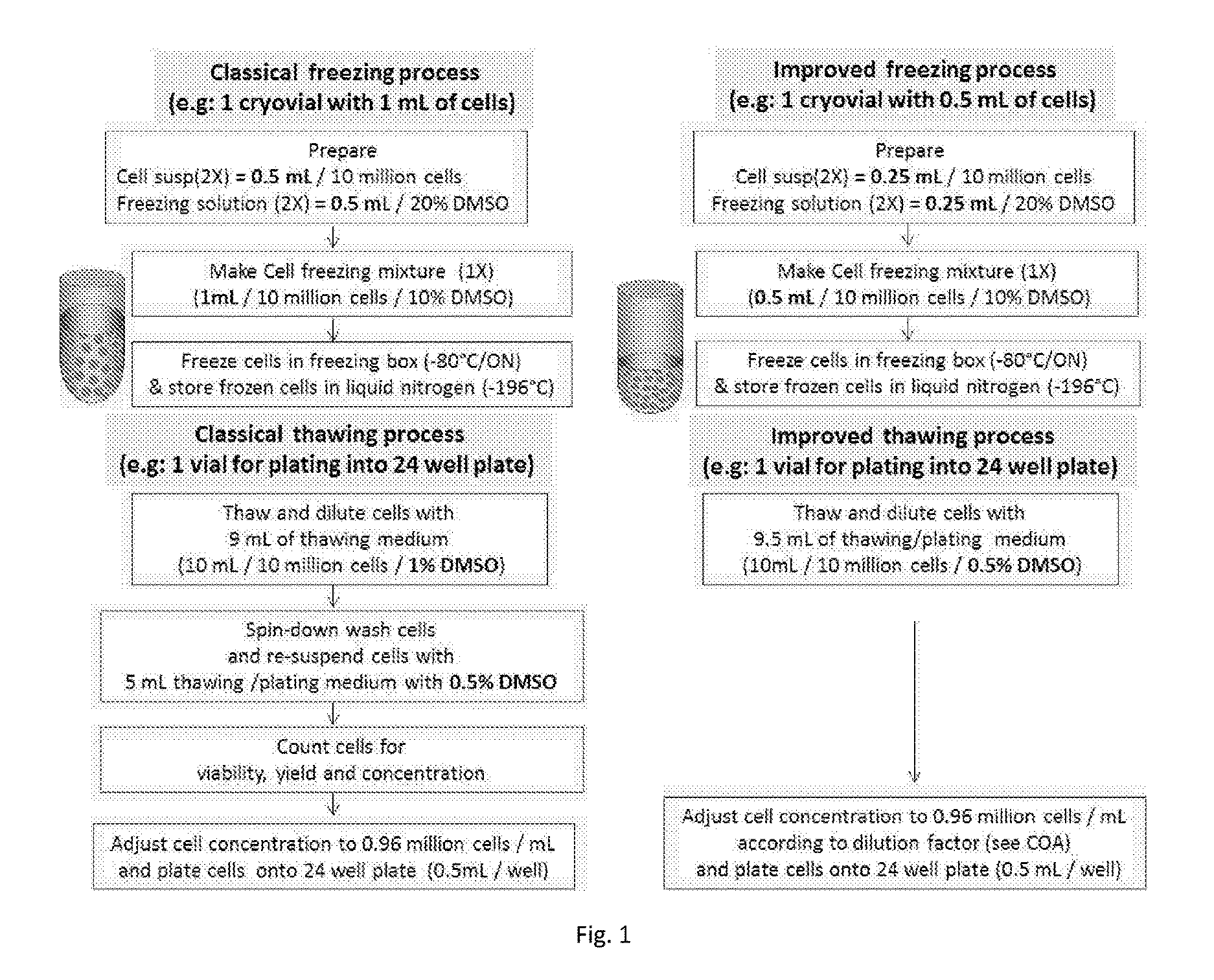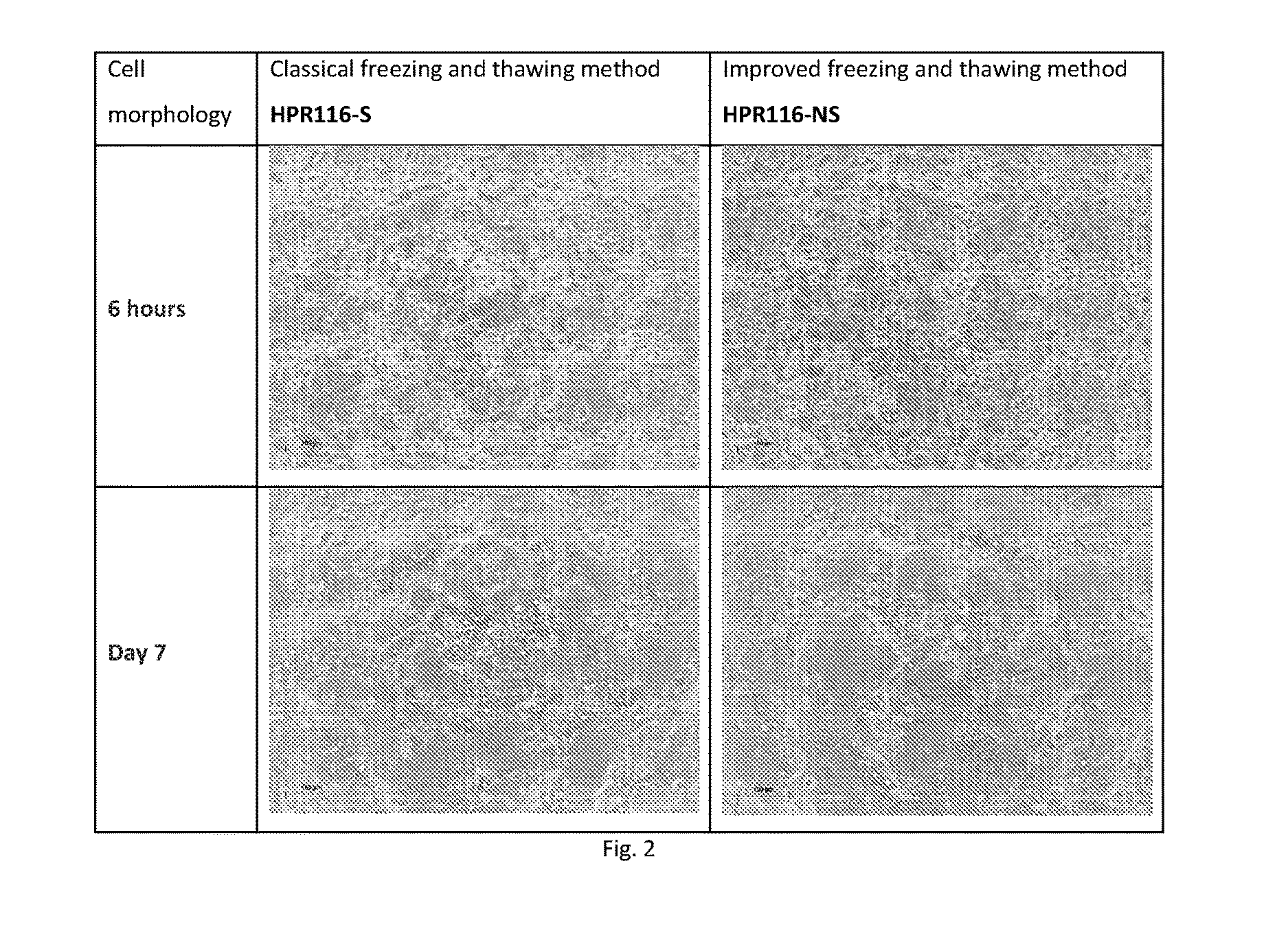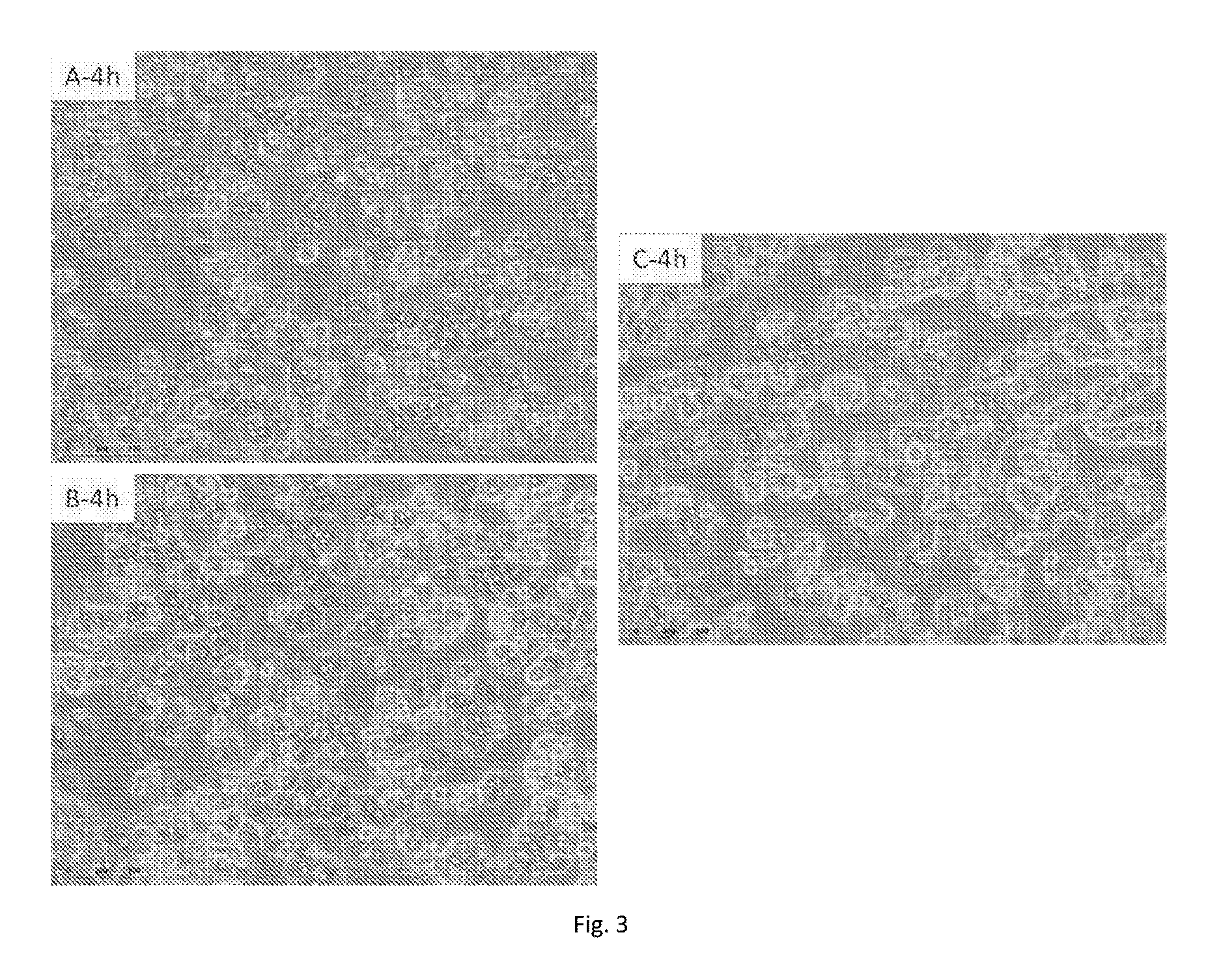No-spin cryopreservation technique and resulting products
- Summary
- Abstract
- Description
- Claims
- Application Information
AI Technical Summary
Benefits of technology
Problems solved by technology
Method used
Image
Examples
example 1
“No Spin” Processing of Cryopreserved and Thawed Hepatocyte Cell Line
[0041]HepaRG® cells (human hepatoma cell line deposit no. 1-2652, filed on 5 Apr. 2001 at the Collection Nationale de Cultures de Microorganismes, Institut Pasteur, 25 rue du Docteur Roux, F-75724 Paris Cedex 15, U.S. Pat. No. 7,456,018, incorporated by reference herein) are terminally differentiated hepatic cells derived from a human hepatic progenitor cell line that retains many characteristics of primary human hepatocytes. Cryopreserved and differentiated HepaRG® cells (Biopredic, Inc.) are now widely used for many cell-based applications, consequently, methods used for the cell freezing, thawing and post-thaw applications should be simple and user-friendly. This example of freezing and thawing process as illustrated with a schematized protocol compares both classical and improved no-spin methods as shown in FIG. 1.
[0042]A. Trypsinizing & Freezing Process
[0043]Step 1. Trypsinizing and Generating of Cell Suspensi...
example 2
Feasibility Study of NS Process for Direct Thawing / Plating Primary Hepatocytes
[0111]In this Example, classic and improved processes, as described in Example 1 above, were carried out on primary hepatocytes. Cryopreserved primary human hepatocytes and rat hepatocytes were used for testing.
[0112]The cells were subjected to the classic method that generally involved, thawing cells in thawing / washing medium, centrifuge and then resuspend cells in seeding medium at an appropriate concentration. Other cryopreserved human hepatocytes and rat hepatocytes from the same lots were subjected to the improved method that generally involved thawing cells directly in thawing / seeding medium at an appropriate concentration based on pre- determined cell number, as described in Example 1. Both sets of cells were then seeded by thawing cells (without Percoll gradient centrifugation) using either the classical or improved process, followed by plating on a culture plate at the same cell density.
[0113]The ...
example 3
Tolerance of Percentage of DMSO in Hepatocyte NS Plating
[0118]In this Example, testing was carried out to determine the effect of different concentrations of DMSO (0 to 2%) on the cell plateability / attachment using the inventive, direct NS plating method.
[0119]Fresh human hepatocytes having 78% viability, corresponding generally to customary thawed cell viability, were plated with DMSO in concentrations ranging from 0 to 2%. The cells were plated without Percoll density gradient centrifugation for both classical and NS methods. The cell seeding density was 0.37 million cells / well (MW24 plate) for both classical & NS methods. The cells were evaluated for cell morphology, plateability, and metabolic activity.
[0120]The results are shown in FIGS. 7-8. FIG. 7 shows cell monolayers, 20 h-post plating. FIG. 8 shows cell monolayers, 48 h post-plating in short-term culture. As can be seen from the Figures, the maximum tolerated DMSO percentage in hepatocyte-NS plating medium for cell attachm...
PUM
 Login to View More
Login to View More Abstract
Description
Claims
Application Information
 Login to View More
Login to View More - R&D
- Intellectual Property
- Life Sciences
- Materials
- Tech Scout
- Unparalleled Data Quality
- Higher Quality Content
- 60% Fewer Hallucinations
Browse by: Latest US Patents, China's latest patents, Technical Efficacy Thesaurus, Application Domain, Technology Topic, Popular Technical Reports.
© 2025 PatSnap. All rights reserved.Legal|Privacy policy|Modern Slavery Act Transparency Statement|Sitemap|About US| Contact US: help@patsnap.com



